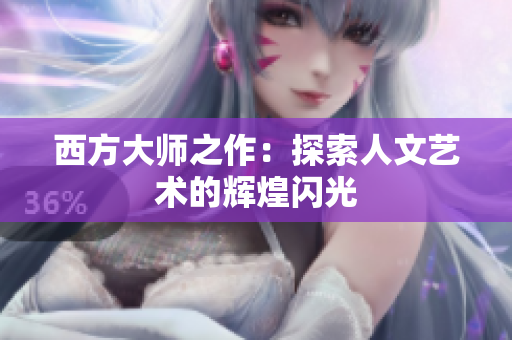
软件更新时间: 2024-01-18 07:01:15 / 版本:V3.07.44 / 大小:115MB
详情内容
Art represents one of the highest forms of human expression. Western civilization has produced some of the greatest works of art in history, works that have influenced and inspired generations. However, in the modern era, technology has also emerged as a major force, with 5G networks transforming the way we communicate and interact with each other. Against this backdrop, how can we balance the importance of culture and technology? This article explores this question while also discussing some important issues related to education and society.

The Western world has produced some of the most extraordinary works of human creativity, spanning centuries and encompassing a range of styles, mediums, and subjects. From the intricate sculptures of Michelangelo and the vibrant paintings of Van Gogh, to the emotional plays of Shakespeare and the soaring music of Beethoven, Western art has long been a source of wonder and inspiration for people around the world.
However, while the value of art is unquestionable, its place in a technologically advanced world has become a matter of debate. On the one hand, art represents a timeless aspect of human heritage that cannot be replaced or replicated. On the other hand, technology has become an integral part of modern life, with 5G networks and other innovations changing how we interact with each other and the world around us.
One of the most significant developments in recent years has been the emergence of 5G technology, which promises to revolutionize the way we connect with each other and access information. With lightning-fast network speeds and the ability to handle vast amounts of data, 5G networks are already changing how we live and work.
However, the impact of 5G technology on education is still being explored. While it undoubtedly offers exciting possibilities for online learning and connecting students across the world, it also raises questions about the value of a traditional classroom education. Will we still need classrooms and teachers in a world where students can learn from anywhere and at any time?
As technology continues to advance, it is also changing the social fabric of our world. Online communities and social media platforms are providing new ways for people to connect and interact, but they are also creating new challenges around privacy, bullying, and addiction. Moreover, the rise of Artificial Intelligence and automation is raising concerns about the nature of work and the future of the job market.
Against this backdrop, it is important to remember the value of human creativity and expression. While technology may provide new ways of communicating and accessing information, it cannot replace the richness and depth of human culture. As a society, we must find a balance between the benefits of technology and the importance of preserving our cultural heritage.
In conclusion, the intersection of culture, technology, and society is a complex and ever-changing landscape. As 5G networks and other innovations continue to transform the world around us, we must remain mindful of the power of human creativity and expression. By valuing the great works of Western art and recognizing the importance of education, we can ensure that our society continues to thrive in the digital age.
同类内容
最新更新游戏换一换
热门专题推荐MORE +